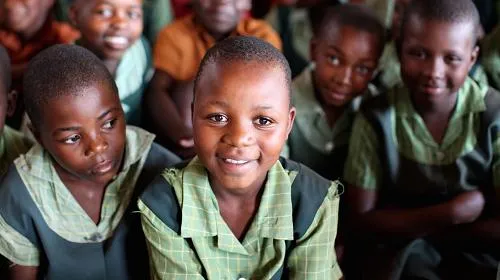WASHINGTON (March 3, 2015) — More than 50 years after former President John F. Kennedy asked CARE to design the initial training program for the Peace Corps, the White House is calling on CARE to help prepare a new wave of Peace Corps volunteers for a modern mission: the education and empowerment of adolescent girls.
President Barack Obama and First Lady Michelle Obama are announcing the Peace Corps’ new role today as part of the administration’s Let Girls Learn Initiative, designed to tackle the barriers keeping 62 million girls — 32 million of them adolescents — out of school. CARE, which fights global poverty by empowering women and girls, will collaborate with the Peace Corps to develop a training program for volunteers and help facilitate their orientation. “CARE is proud to re-embrace a piece of our history and help the Peace Corps join the most important struggle facing the world today,” said CARE President and CEO Helene Gayle, who will be on hand for the announcement. “Few things move us faster toward a more prosperous, peaceful world than educating and empowering a girl.”
The forces keeping adolescent girls out of the classroom are many: from child marriage and lack of sanitation facilities to parents’ preference for boys to continue schooling while girls stay home to help with chores. This latest component of the Let Girls Learn Initiative tasks Peace Corps volunteers, who live and work at the grassroots level around the world, with acting as catalysts of community-led change. CARE knows from its decades of experience that transforming gender dynamics is a complex process. So an essential part of the Peace Corps training will involve a well-honed CARE curriculum that focuses on interpersonal power dynamics and how to meaningfully engage and work with others despite differences. CARE, whose programs reached 72 million people in 90 countries last year, has used the training extensively for its own staff and partners around the world.
“CARE’s experience has taught us that it takes a community to educate and empower a girl,” Dr. Gayle said. “So we’re excited to coach Peace Corps volunteers in how to nurture solutions that come from within communities and, as a result, will endure.”
In 1961, at the request of then-President Kennedy, CARE trained the original Peace Corps volunteers. The sessions, held at Rutgers University, prepared volunteers bound for Colombia. CARE and the Peace Corps would go on to collaborate on training and projects in additional countries such as Sierra Leone, Pakistan, Guatemala and Turkey.
CARE and the Peace Corps will waste no time in launching their latest collaboration. The first group of volunteers working under Let Girls Learn will undergo orientation March 13. CARE’s facilitation guides and training materials include five modules on gender equity and diversity, designed for in-person training of groups. They are ideally suited for the Peace Corps volunteers — during staging and their in-country orientation — because the modules promote learning through dialogue and an exchange of ideas with others.
The initial session, and others to follow in March and April, will take place in Philadelphia, where CARE has deep roots. CARE was founded 70 years ago to deliver CARE Packages® of food and supplies to war-torn Europe. And those packages were assembled in Philadelphia. CARE’s mission evolved over the decades to focus on long-term solutions to poverty, including a special focus on the empowerment of women and girls. That is what has brought CARE and the Peace Corps back together today.
Media Contacts
Stephanie Chen, in Washington, schen@care.org, 404 819 6638; Brian Feagans, in Atlanta, bfeagans@care.org, 404-979-9453; Nicole Harris, in Atlanta, nharris@care.org, 404-735-0871.
Historical Photos/Videos
CARE has photos and video footage from its original Peace Corps collaboration available upon request.
About CARE
Founded in 1945 with the creation of the CARE Package®, CARE is a leading humanitarian organization fighting global poverty. CARE places special focus on working alongside poor girls and women because, equipped with the proper resources, they have the power to lift whole families and entire communities out of poverty. Last year CARE worked in 90 countries and reached more than 72 million people around the world. To learn more, visit www.care.org.

